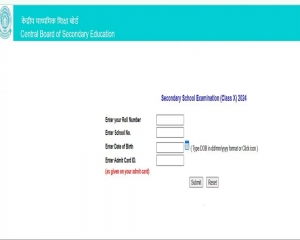The Government must extend comprehensive support to farmers, fostering significant opportunities for saffron production in similar regions
In the heart of the border district Poonch in Jammu and Kashmir, amidst the rugged terrain and lush valleys, a quiet revolution is underway - the cultivation of saffron. “For the past 5 years, we have been conducting trials of saffron and a year ago, we took the plunge into full-scale cultivation. The results? Astonishing! Our efforts were supported by School of Biotechnology at the University of Jammu, who provided us a generous grant of INR 10 lakhs. With unwavering support from Professor Jyoti and the expertise of the university’s scholars, including PhD student Tahil Bhatti and SDO, Horticulture, Mohammad Fareed from Poonch, we started to explore saffron cultivation in Poonch, uncovering the untapped potential of saffron production in the region,” shared 35-year-old farmer Ajaz Ahmad from Bayla village, in Mandi tehsil, bordering Poonch. He has made a name for himself as a saffron farmer in the region, moving away from traditional farming over the past few years.
In this research, Ajaz found that saffron production can be done in abundance in areas like Surankote, Arai, Fatehpur, Bayla, Mandi and Mendhar of Poonch. The environment and soil here are almost similar to those in the regions of Jammu and Kashmir where saffron production takes place.
Saffron holds the esteemed title of being one of the world’s most prised spices. Known as “Kong” in Kashmiri, “Jafran” in Urdu and “Kesar” in Hindi, it is derived from the delicate threads of fragrant flowers. Historically, its cultivation has been confined to specific regions within the Union Territory. While some cultivation occurs in Kishtwar, the Pampore region of Kashmir reigns as its primary producer, renowned for its superior quality. Commanding a premium price, Pampore saffron fetches around 3 lakh rupees per kilogram. It takes an astonishing quantity of flowers-approximately 160 to 180-to yield just one gram of saffron. Moreover, a kilogram of this precious spice requires the harvest of about half a million flowers.
Ajaz Ahmad highlights the shifting agricultural landscape in Poonch, noting a traditional focus on seasonal crops like maize. However, he observes a gradual change in mindset among local farmers, with growing enthusiasm for saffron production. “We have procured saffron seeds from Pampore and Kishtwar districts of Kashmir.
Now, my desire is that after Pampore and Kishtwar, Poonch becomes the third largest center for saffron production in Jammu and Kashmir,” he said. He advocates for Governmental support in the form of security measures rather than subsidies, citing the comparatively high cost of saffron seeds. Ajaz emphasises the need for crop protection from wildlife, particularly bears that frequently ravage fields, suggesting that fencing could mitigate such risks and safeguard farmers’ livelihoods.
It can be easily understood that extensive efforts are required for saffron production. In India, saffron cultivation begins in June and July, while in some regions, it starts in August and September. Flowering usually begins in October. Apart from India, saffron cultivation is mainly done in Spain, Italy, Greece, Turkey, Iran and China. 80 per cent of the world’s total saffron production is concentrated in Spain and Iran alone. For the farmers involved in its production, it is nothing less than a boon because its price in the market ranges from 3 to 3.5 lakh rupees per kilogram.
The allure of saffron extends to both men and women who actively engage in its cultivation. Shamim Akhtar, a 35-year-old farmer from Bayla, shared, “I’ve been cultivating saffron for several years now and the results have been rewarding. However, the construction of a road through our land resulted in crop damage. Nonetheless, my passion for saffron cultivation remains strong. Despite facing financial constraints to procure seeds, I aspire to continue with this endeavor.”
Farmer Abdul Samad from the same village, however, has another concern on his mind. He is worried about agriculture being affected by changing environmental conditions. He explains that due to changing weather patterns, there has been a decrease in saffron production in Kashmir in recent years. It requires rainfall between 1000 to 1500 millimetres, which has decreased and untimely snowfall has had a negative impact on the soil, resulting in reduced saffron production.
Kashmir, which previously yielded up to 15 tons of saffron annually, has seen this output dwindle to 8 to 9 tons, a worrying trend. Despite this setback, Kashmiri saffron remains highly valued for its medicinal properties, known to alleviate blood pressure and migraines and find use in beauty products. The central Government’s attention to Kashmiri saffron is evident through initiatives like the National Saffron Mission (NSM). Aimed at bolstering saffron production and enhancing the socio-economic status of Kashmiri residents, the NSM has notably benefited saffron farmers. Additionally, various other Government schemes also promote saffron cultivation. However, for farmers to swiftly reap the benefits of these programs, they must be executed on a larger scale, given the increasing enthusiasm for saffron cultivation.
(The writer is a grassroots writer from Poonch, J&K. Charkha Features)

























